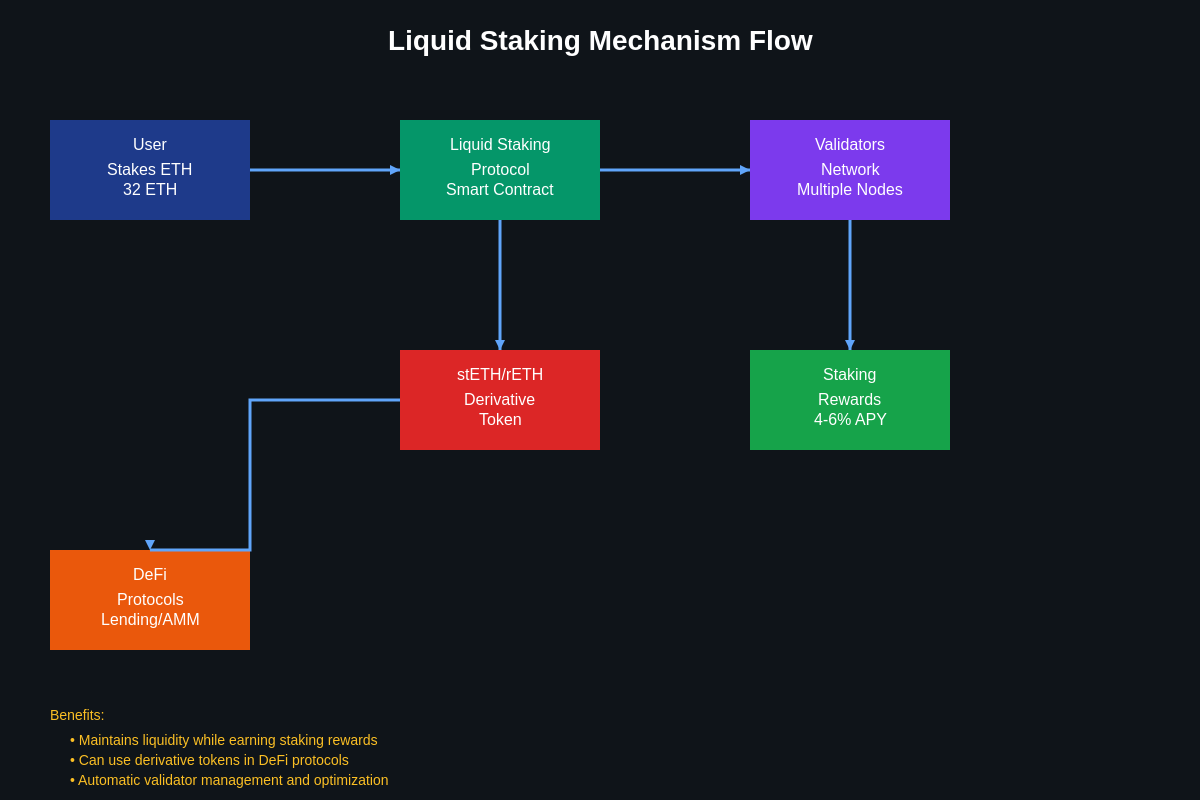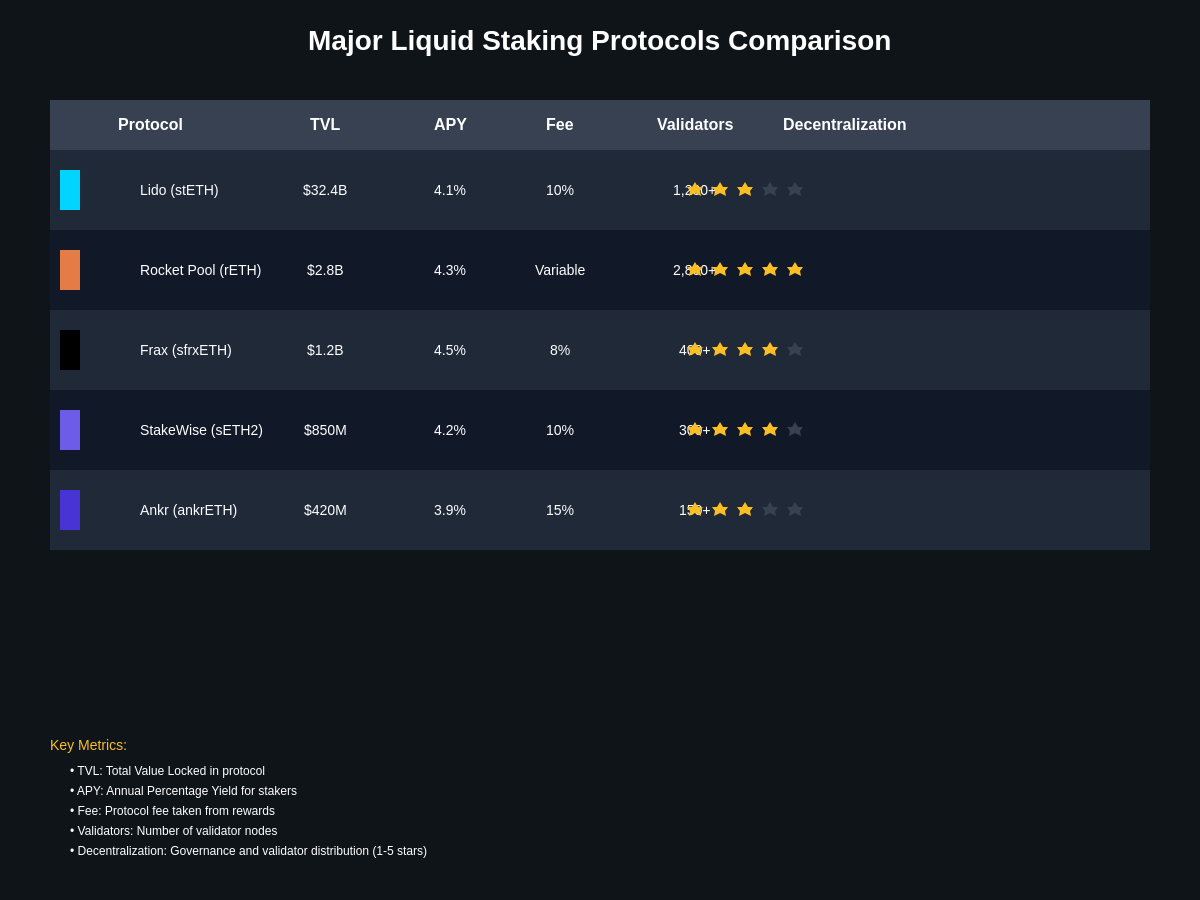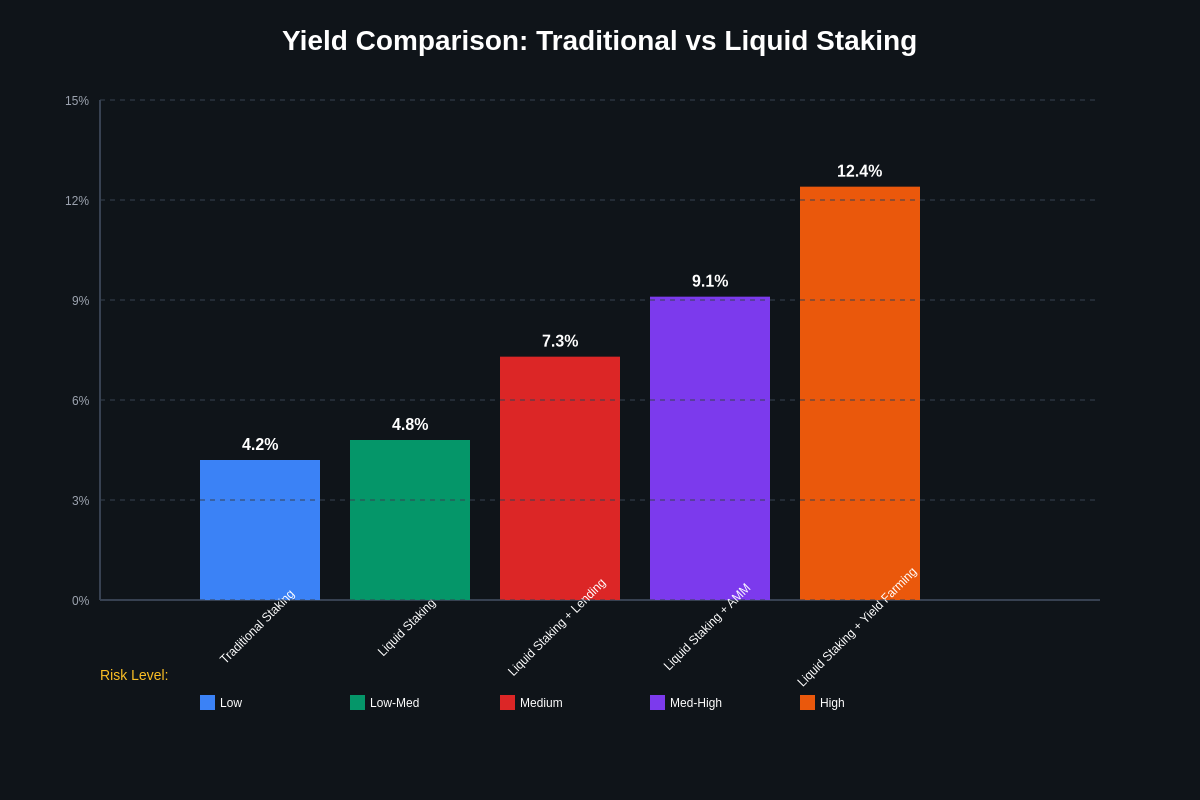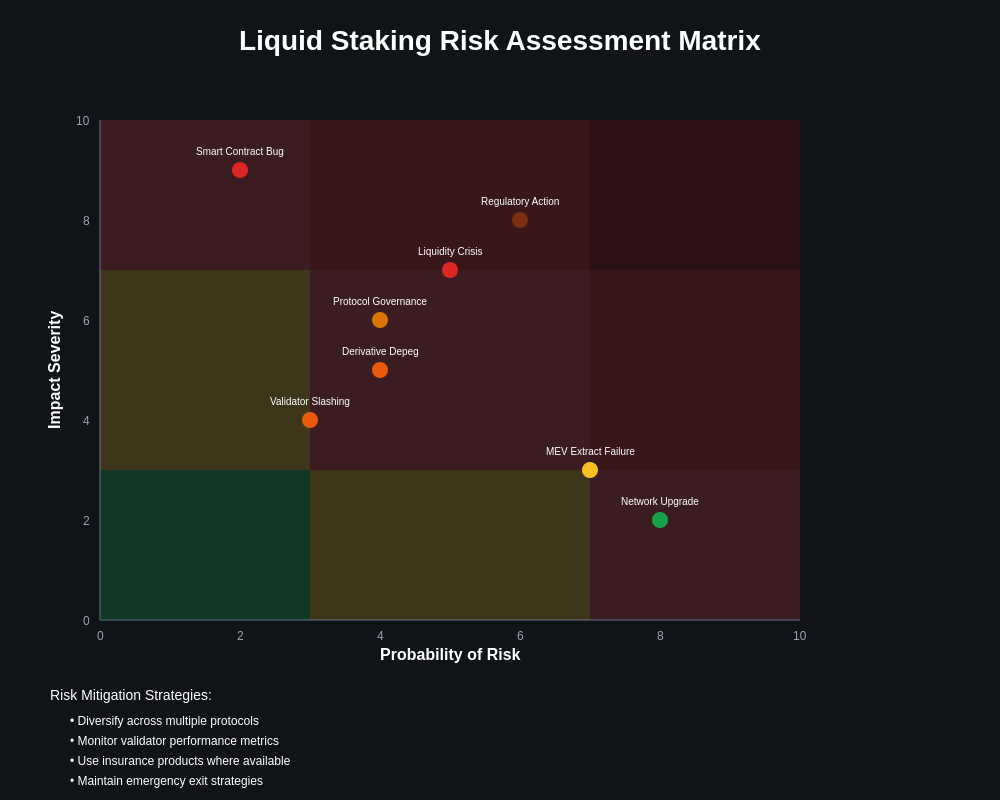Explore advanced staking strategies and maximize your yields with cutting-edge liquid staking solutions that have revolutionized the way cryptocurrency holders approach yield generation while maintaining operational flexibility.
The Evolution of Staking and Liquidity Solutions
Liquid staking represents one of the most significant innovations in decentralized finance, fundamentally transforming how cryptocurrency holders can participate in network validation while maintaining the flexibility to utilize their staked assets for additional yield opportunities. Traditional staking mechanisms have historically required users to lock their tokens for extended periods, creating an opportunity cost that prevented optimal capital efficiency in the rapidly evolving DeFi ecosystem.

The emergence of liquid staking protocols has addressed this fundamental limitation by enabling users to stake their assets while receiving tradeable derivative tokens that represent their staked position, effectively unlocking liquidity that was previously trapped in validation nodes. This innovation has created new paradigms for yield generation, risk management, and capital allocation that extend far beyond simple network participation rewards.
The technical architecture underlying liquid staking systems involves sophisticated smart contract implementations that manage the distribution of staked assets across multiple validators while maintaining accurate accounting of user positions through tokenized representations. These systems must balance the competing requirements of decentralization, security, and operational efficiency while providing seamless user experiences that abstract away the complexity of validator selection and management.
Modern liquid staking protocols have evolved to incorporate advanced features including automated validator selection algorithms, slashing protection mechanisms, and sophisticated reward distribution systems that optimize returns while minimizing risks associated with validator performance and network conditions. The integration of these protocols with broader DeFi ecosystems has created compound yield opportunities that were previously impossible with traditional staking approaches.
Technical Architecture and Protocol Mechanics
The underlying technical architecture of liquid staking protocols involves complex interactions between multiple smart contract components that collectively manage user deposits, validator delegation, reward distribution, and derivative token management. The core architecture typically includes deposit contracts that accept user assets, validator management systems that distribute stakes across multiple nodes, and accounting mechanisms that track individual user positions within pooled staking arrangements.
Smart contract implementations must address numerous technical challenges including accurate reward calculation and distribution, efficient validator selection and rebalancing, protection against slashing events, and maintenance of derivative token price stability through various market conditions. The mathematical models underlying these systems require careful consideration of factors including validator performance variability, network reward fluctuations, and the potential impact of large deposit or withdrawal events on overall protocol stability.
Validator selection algorithms employed by liquid staking protocols utilize sophisticated scoring mechanisms that consider factors including historical performance, commission rates, uptime statistics, and geographical distribution to optimize both returns and decentralization. These algorithms must continuously adapt to changing network conditions while maintaining fair distribution of stake across the validator set to avoid concentration risks that could compromise network security.
The derivative token mechanisms employed by different liquid staking protocols vary significantly in their implementation approaches, with some protocols utilizing rebasable tokens that automatically reflect staking rewards while others employ wrapper tokens with exchange rates that appreciate over time. Each approach presents different trade-offs in terms of DeFi composability, user experience, and technical complexity that influence their adoption and integration within broader DeFi ecosystems.
Price discovery mechanisms for liquid staking derivatives represent another critical component of protocol architecture, with different systems employing various approaches including algorithmic redemption mechanisms, secondary market trading, and hybrid models that combine multiple liquidity sources. The efficiency of these mechanisms directly impacts the capital efficiency and user experience of liquid staking systems while influencing their integration with other DeFi protocols.
Comparative Analysis of Major Liquid Staking Protocols
The liquid staking ecosystem has evolved to include numerous competing protocols, each offering distinct advantages and addressing different market segments through varied technical approaches and feature sets. Leading protocols have differentiated themselves through factors including security architecture, validator selection mechanisms, fee structures, and integration capabilities with broader DeFi ecosystems.

Ethereum liquid staking protocols have gained particular prominence following the network’s transition to proof-of-stake, with various solutions offering different approaches to validator management, MEV optimization, and derivative token design. The diversity of approaches reflects the complex trade-offs between decentralization, efficiency, and user experience that characterize this rapidly evolving market segment.
Multi-chain liquid staking solutions have emerged to address the growing demand for staking services across different blockchain networks, requiring sophisticated cross-chain infrastructure and governance mechanisms to maintain security and operational efficiency across diverse technical architectures. These systems face additional challenges related to cross-chain communication, asset bridging, and coordination of governance decisions across multiple blockchain communities.
The competitive landscape continues to evolve as new protocols introduce innovative features including enhanced MEV capture mechanisms, improved slashing protection systems, and more sophisticated yield optimization strategies. The analysis of staking reward trends across different protocols reveals significant variations in performance that reflect both technical capabilities and market positioning strategies.
Governance token economics and protocol sustainability models vary significantly across different liquid staking platforms, with some protocols relying on traditional fee-based revenue models while others incorporate more complex tokenomics that align long-term incentives between protocol operators, validators, and token holders. The evaluation of these models requires careful consideration of factors including revenue sustainability, governance effectiveness, and alignment with broader ecosystem development goals.
Risk Assessment and Mitigation Strategies
Liquid staking protocols introduce unique risk profiles that combine traditional staking risks with additional complexities related to smart contract security, validator performance, and derivative token price stability. Understanding and managing these risks is essential for users seeking to optimize their returns while protecting their capital in dynamic market conditions.
Smart contract risks represent a fundamental consideration for liquid staking participants, as these protocols rely on complex code implementations that manage significant amounts of user funds while interfacing with multiple external systems. The assessment of smart contract security requires evaluation of factors including code audit history, formal verification processes, bug bounty programs, and the track record of development teams responsible for protocol maintenance and upgrades.
Validator risk management presents another critical consideration, as liquid staking protocols must select and monitor validators on behalf of their users while protecting against performance degradation and slashing events. Effective risk mitigation strategies include diversification across multiple validators, continuous performance monitoring, and the implementation of slashing protection mechanisms that can minimize losses from validator misbehavior.
Liquidity risks associated with derivative tokens can impact users’ ability to exit positions during market stress or protocol disruptions, making it essential to evaluate the depth and stability of secondary markets for liquid staking derivatives. The analysis of derivative token trading patterns reveals important insights into market dynamics and liquidity conditions that affect position management strategies.
Regulatory risks continue to evolve as jurisdictions develop frameworks for staking activities and derivative financial products, with potential implications for protocol operations, token classifications, and user obligations. Staying informed about regulatory developments and their potential impact on liquid staking protocols is essential for making informed investment decisions and managing compliance requirements.
Yield Optimization and Compound Strategies
The integration of liquid staking derivatives with broader DeFi ecosystems has created numerous opportunities for yield optimization through compound strategies that layer additional earning opportunities on top of base staking rewards. These strategies require careful analysis of risk-adjusted returns and the correlation between different yield sources to optimize overall portfolio performance.

Lending and borrowing strategies utilizing liquid staking derivatives as collateral can provide additional yield while maintaining exposure to staking rewards, though these approaches introduce liquidation risks and interest rate volatility that must be carefully managed. The evaluation of different lending platforms and their treatment of liquid staking derivatives reveals significant variations in collateral factors, liquidation mechanisms, and overall risk profiles.
Automated market maker participation using liquid staking derivatives can generate trading fees and liquidity mining rewards while maintaining staking exposure, though impermanent loss considerations and the dynamics of derivative token price movements require sophisticated risk management approaches. The analysis of liquidity pool performance across different AMM platforms provides insights into optimal allocation strategies and risk mitigation techniques.
Yield farming opportunities that incorporate liquid staking derivatives continue to evolve as new protocols and incentive programs are introduced, creating dynamic landscapes of opportunity that require active monitoring and portfolio adjustment. The evaluation of these opportunities requires consideration of factors including token emission schedules, protocol sustainability, and the correlation between different reward mechanisms.
The development of specialized yield optimization protocols that automatically manage liquid staking positions and rebalance across different opportunities has created new tools for maximizing returns while minimizing active management requirements. These protocols employ sophisticated algorithms that consider factors including gas costs, opportunity costs, and risk-adjusted returns to optimize capital allocation decisions.
Integration with DeFi Ecosystems
The composability of liquid staking derivatives within broader DeFi ecosystems has created unprecedented opportunities for capital efficiency and yield generation that extend far beyond traditional staking mechanisms. The integration of these assets with lending protocols, automated market makers, and yield farming platforms has fundamentally transformed the risk-return profiles available to sophisticated DeFi participants.
Cross-protocol integrations have enabled the development of complex financial products that combine liquid staking with options, futures, and other derivative instruments to create tailored risk exposure and return profiles. These integrations require careful consideration of the interaction effects between different protocol risks and the potential for cascade effects during market stress events.
The emergence of liquid staking derivatives as core DeFi primitives has influenced the development of new protocols and features specifically designed to optimize their utilization, including specialized lending markets, custom AMM curves, and yield aggregation strategies. The growing ecosystem of tools and protocols built around liquid staking derivatives demonstrates their increasing importance within the broader DeFi landscape.
Institutional adoption of liquid staking solutions has been facilitated by their integration with traditional financial infrastructure and custody solutions, enabling professional investors to access staking yields while maintaining compliance with institutional investment requirements. The development of institutional-grade liquid staking products reflects the maturation of this market segment and its growing acceptance within traditional finance.
The interoperability of liquid staking derivatives across different blockchain networks has created opportunities for cross-chain yield strategies and arbitrage opportunities that require sophisticated infrastructure and risk management capabilities. The development of cross-chain liquid staking protocols and bridge technologies continues to expand these opportunities while introducing new technical and operational complexities.
Market Dynamics and Price Discovery
The price discovery mechanisms for liquid staking derivatives represent critical components of the overall ecosystem that directly impact capital efficiency and user experience. Understanding these mechanisms and their behavior under different market conditions is essential for effective position management and risk assessment in liquid staking strategies.
Secondary market trading for liquid staking derivatives has evolved to include multiple venues and liquidity sources, each with different characteristics regarding depth, price impact, and fee structures. The analysis of trading patterns and market microstructure reveals important insights into optimal execution strategies and the factors that influence derivative token price stability.
Arbitrage opportunities between derivative tokens and their underlying assets create important price discovery mechanisms while providing yield opportunities for sophisticated traders. The efficiency of these arbitrage mechanisms directly impacts the capital efficiency of liquid staking systems and influences the overall user experience for both large and small participants.
The correlation between liquid staking derivative prices and broader market conditions reveals important insights into the risk characteristics of these assets and their behavior during different market regimes. Market analysis tools provide valuable insights into these correlation patterns and their implications for portfolio construction and risk management.
Market making activities for liquid staking derivatives require specialized strategies that account for the unique characteristics of these assets, including their correlation with underlying assets, reward accrual mechanisms, and the impact of validator performance on token values. The development of sophisticated market making algorithms has improved liquidity conditions while creating new revenue opportunities for professional traders.
Regulatory Landscape and Compliance Considerations
The regulatory treatment of liquid staking protocols and their derivative tokens continues to evolve as jurisdictions develop frameworks for addressing the unique characteristics of these financial products. Understanding the regulatory landscape and its implications for protocol operations and user obligations is essential for making informed decisions about liquid staking participation.
Securities law considerations surrounding liquid staking derivatives vary significantly across jurisdictions, with different authorities taking varied approaches to the classification of staking rewards, derivative tokens, and the investment contract analysis of liquid staking arrangements. The evolving nature of these regulatory frameworks creates ongoing uncertainty that participants must carefully monitor and assess.
Tax implications of liquid staking participation can be complex, involving considerations of staking reward recognition, derivative token treatment, and the timing of taxable events across different strategies and jurisdictions. Professional tax advice is essential for optimizing tax efficiency while maintaining compliance with applicable requirements across different locations and entity structures.
Anti-money laundering and know-your-customer requirements continue to evolve for liquid staking protocols, with different platforms implementing varied approaches to compliance monitoring and reporting. Understanding these requirements and their implications for privacy and accessibility is important for selecting appropriate platforms and strategies.
The international coordination of regulatory approaches to liquid staking and DeFi more broadly remains an ongoing challenge that creates uncertainty for both protocol operators and users. Monitoring developments in regulatory coordination efforts and their potential impact on cross-border liquid staking activities is essential for long-term strategic planning.
Institutional Adoption and Infrastructure Development
The growing institutional adoption of liquid staking solutions reflects their maturation as a legitimate asset class and investment strategy within professional portfolio management contexts. Institutional participation has driven the development of enhanced security features, custody solutions, and compliance capabilities that benefit the broader ecosystem.

Custody and security infrastructure for institutional liquid staking participation has evolved to include specialized solutions that address the unique requirements of professional investors while maintaining the benefits of liquid staking derivatives. These solutions often incorporate advanced security features, insurance coverage, and integration with existing institutional infrastructure.
Risk management frameworks for institutional liquid staking participation require sophisticated approaches that address the multiple layers of risk inherent in these strategies while providing the transparency and reporting capabilities required by institutional investors. The development of specialized risk management tools and methodologies has enhanced the accessibility of liquid staking for professional participants.
The integration of liquid staking solutions with traditional financial infrastructure including prime brokerage, settlement systems, and portfolio management platforms has reduced barriers to institutional adoption while creating new opportunities for product development and service provision within the traditional financial sector.
Regulatory compliance infrastructure for institutional liquid staking participation continues to develop as providers seek to address the complex requirements of different jurisdictions and investor types. The development of compliant institutional liquid staking products has required significant investment in legal, compliance, and operational infrastructure.
Future Developments and Technological Innovations
The future development of liquid staking technologies promises to address current limitations while introducing new capabilities that could further transform the staking landscape. Understanding these developments and their potential implications is essential for long-term strategic planning and investment decision-making in the liquid staking space.
Technological innovations including improved consensus mechanisms, enhanced cross-chain interoperability, and more sophisticated validator selection algorithms continue to enhance the efficiency and security of liquid staking protocols. The development of these technologies requires ongoing research and development investment while creating new opportunities for competitive differentiation.
The integration of artificial intelligence and machine learning technologies into liquid staking protocols promises to improve validator selection, risk management, and yield optimization while reducing operational overhead and improving user experiences. These technological enhancements could significantly impact the competitive landscape while creating new capabilities for protocol operators and users.
Privacy-preserving technologies including zero-knowledge proofs and secure multi-party computation could enhance the security and privacy characteristics of liquid staking protocols while enabling new features and capabilities. The development of these technologies requires significant technical expertise while creating opportunities for improved user protection and regulatory compliance.
The evolution of governance mechanisms for liquid staking protocols continues to advance with the development of more sophisticated voting systems, delegation mechanisms, and decision-making processes that could improve protocol governance while enhancing user participation and stakeholder alignment.
Interoperability developments including improved cross-chain communication protocols and standardized derivative token interfaces could enhance the composability and utility of liquid staking derivatives while creating new opportunities for innovation and product development across different blockchain ecosystems.
Conclusion and Strategic Outlook
Liquid staking has fundamentally transformed the relationship between yield generation and capital efficiency in the cryptocurrency ecosystem, creating new paradigms for investment strategy and risk management that extend far beyond traditional staking mechanisms. The continued evolution of this technology promises to further enhance capital efficiency while creating new opportunities for sophisticated investors and DeFi participants.
The strategic importance of liquid staking within broader DeFi ecosystems continues to grow as these protocols become core infrastructure for yield generation, collateral provision, and capital allocation. Understanding the complex dynamics of liquid staking markets and their integration with broader financial systems is essential for capitalizing on the opportunities presented by this rapidly evolving sector.
The successful navigation of liquid staking opportunities requires sophisticated understanding of technical architecture, risk management, regulatory considerations, and market dynamics that collectively determine the attractiveness and viability of different strategies. Continuous monitoring of developments in technology, regulation, and market structure is essential for maintaining competitive advantages while managing evolving risks.
For those seeking to optimize their cryptocurrency holdings through advanced trading strategies, liquid staking represents a fundamental tool that can enhance returns while providing operational flexibility that enables participation in broader DeFi opportunities. The integration of liquid staking with other investment strategies creates compound benefits that can significantly enhance overall portfolio performance.
Disclaimer: This article is for informational purposes only and does not constitute financial advice. Cryptocurrency investments involve significant risks including the potential loss of principal. Liquid staking protocols involve additional risks including smart contract vulnerabilities, validator performance issues, and regulatory uncertainties. Past performance does not guarantee future results. Always conduct thorough research and consider consulting with qualified financial advisors before making investment decisions. The regulatory status of liquid staking and related activities may vary by jurisdiction and subject to ongoing changes.